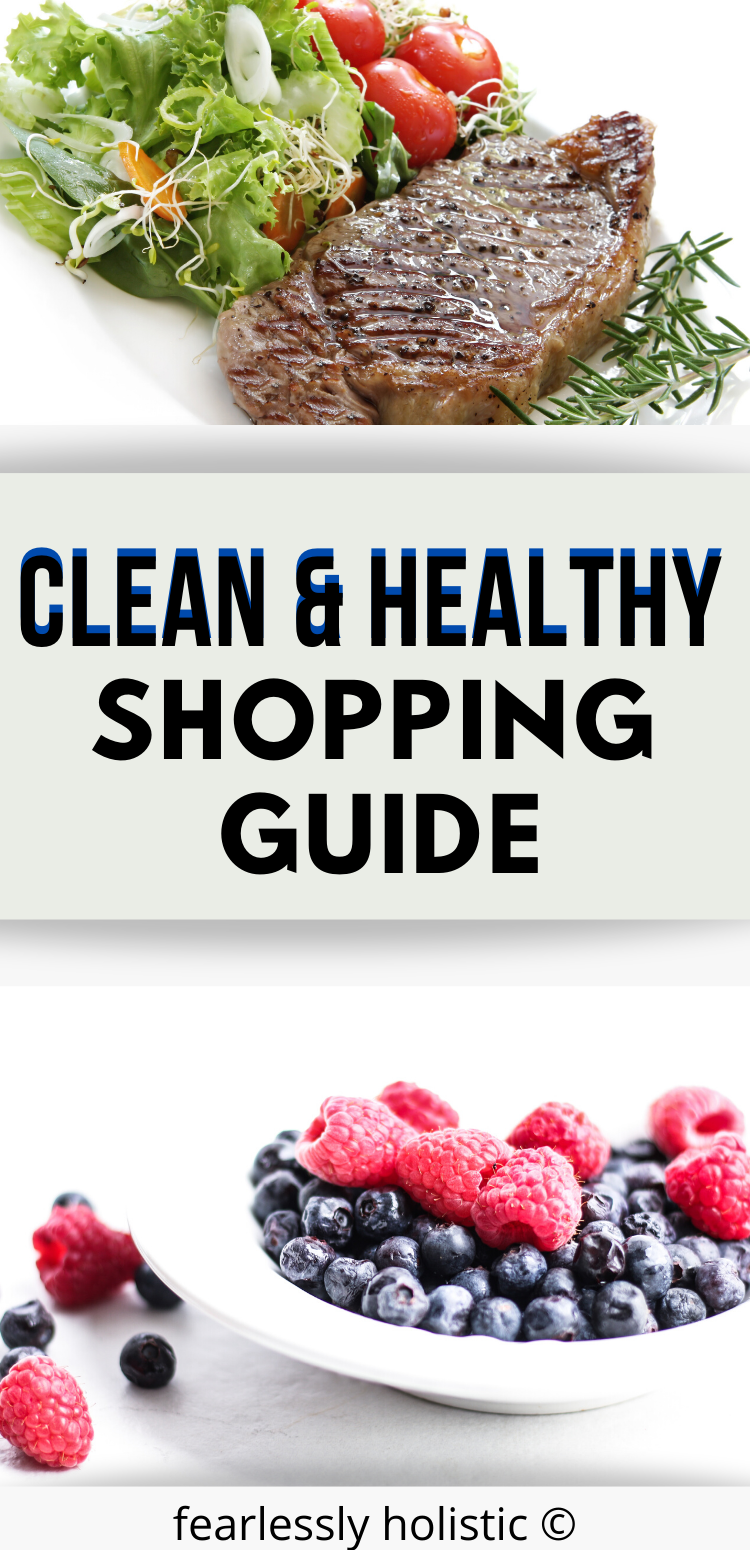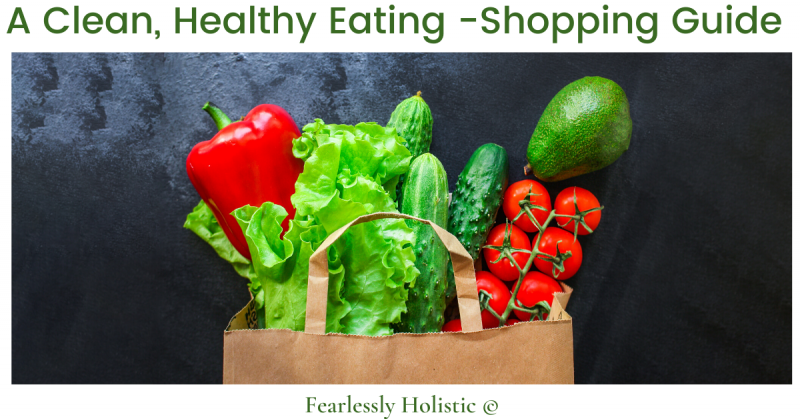This clean, healthy eating shopping guide will help you navigate the grocery store to find quality, healthy, whole foods.
Buying the best food that you can afford is the number one thing that you can do to improve your health.
Related Post: Clean Eating For Improved Health (post #1 in this series)
Eating poor quality food is directly tied to many health issues including Type II diabetes, heart disease, some cancers, Parkinson’s disease, and Alzheimer’s.
Hello and welcome to Fearlessly Holistic.
My name is Irma and I want to share my journey to improved health by eating whole foods, moving my body and eliminating stress as much as possible.
It is my hope to inspire you to make daily changes.
Why? Because eating fresh, seasonal food and getting some sunshine is the best way to increase longevity. But you do not want just a long life.
You want a quality long life.
My blog posts are my opinion and the results of things that I have tried that either worked for me or didn’t. My opinions are for informational purposes only and are not intended as medical advice. Medical advice should always be obtained from a qualified medical professional for any health conditions or symptoms associated with them. As well, there may be affiliate links in this post. Read more here.
Before You Write That Clean Eating Shopping List…
These tips will help to prepare you for shopping success.
Do not think that you have to do everything, every time. Choose one thing to change each time you shop, and soon you will be a clean eating pro!
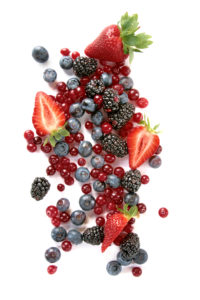
Shop Local Or Grow Your Own Produce
When you eat clean a big part of your diet will be made up of produce, specifically leafy greens.
The best way to get or fruits and vegetables is to grow them yourself. You can go all out and plant a garden, or start small with a few herbs and a perpetual salad bowl on your counter.
Nothing beats “grocery shopping” in your own back yard.
The next best thing is to find local grown produce. Visit your local farmer’s market as soon as they start up for the year.
Get to know the farmers in your area, or see if there’s a neighborhood garden you can participate with.
When you are able to find free or inexpensive produce locally, consider canning or freezing what you can’t use right away for later in the year.
Getting most of your produce this way will make it even quicker and easier when you head to the grocery store.
Shop The Perimeter Of The Grocery Store
Much of what’s found in the center isles of your local grocer is “food” you’ll no longer be buying or eating. This is where the processed food lives.
Shop mainly around the perimeter of the grocery store, sticking to produce, meat, dairy and the frozen department (for fruits and vegetables that aren’t in season).
Stay out of the center isles to avoid temptation as much as possible. Grab the few items you need there and head to the cash register.
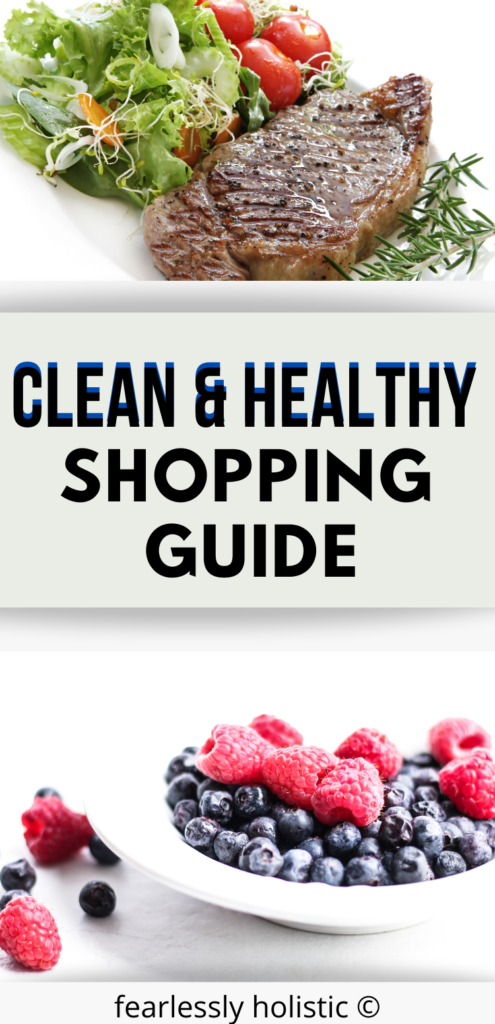
Go Shopping With A Plan
It helps to go shopping with a list. But you also want to take advantage of any good sales, especially on meat.
It will keep you focused and you’ll make sure you won’t forget anything, particularly when you’re cooking new recipes.
It also helps keep you from cheating since you can’t really buy what’s not on the list – unless it’s toilet paper, and then by all means buy some even if it isn’t on the list.
Related Post: Clean Eating Food List For Beginners
Don’t Go Hungry
Another helpful tip that works much better than you may suspect is to never go to the store hungry. It’s like all the unhealthy food calls to you if you go shopping on an empty stomach. I speak from experience here!
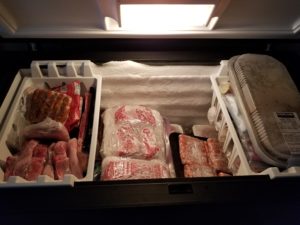
Go shopping after a meal or a decent snack before you head to the store. It will do wonders for your willpower.
If You Can, Purchase a Chest Freezer
They are so awesome for buying meat in bulk, like at Costco. A freezer will allow you to take advantage of good deals on larger cuts of meat, like roasts, or bulk packs.
You don’t need the biggest one; you can get a small new freezer at Costco for cheap, or buy second hand.
I was getting some really good deals on beef roasts over the past winter. There was a maximum purchase amount, so I tried to go twice a week when the deal was on, buying two each time.
Read Food Labels
Before you head to the store, let’s talk about food labels. There will be times when you have to enter the inner aisles to get stuff to go with stuff. Be prepared by understanding the labels.
If you have never really paid attention to food labels, brace yourself because you are about to go pro!
I think food labels scare people because of the math.
Food labels give you some weird and, dare I say, complicated information. However, since we are going to mostly shop other areas of the store, I will give you a brief primer on food labels…just in case.
Facts About Nutrition Labels
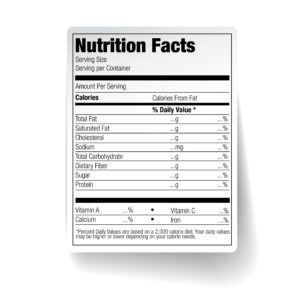
The nutrition label located on packaged and canned food items will tell you a lot about that food.
Food labels are based on the concept that normal, healthy adults require 2,000 calories a day for health (+/-). Therefore, dietary requirements are divided up based on this.
If the label lists the amount of Vitamin A or Iron in a food, the label bases the percentage on the 2,000 calorie requirement.
These requirements also assume the person eating the food is healthy, without major illnesses or allergies that would require modifications.
This is important, because if your health is poor, following a Standard American Diet (SAD) of 2,000 calories daily may not meet your personal dietary needs.
Serving Size
This size is based on the amount people should eat based on the 2,000 calories daily. Not how much you may want to eat.
It is important to always check serving size on the label, because that serving may not realistically be how much you eat.
An example is breakfast cereal.
Most people just pour cereal into a bowl without measuring, thinking it is a normal serving. If you were to measure the actual amount of cereal it could be two, three, or even four times as much. Or more!
Similar food items will have similar serving sizes, thus making it easier to compare 2 foods of the same category.
% Daily Value
This indicates how the food items nutrients fits into a 2,000 calorie diet. This will help you to understand if the food has a lot, or just a little of the important nutrients.
Keep in mind that these values are based on the Standard American Diet, which is high in processed carbs and fruit.
If you do not follow a SAD diet, then the % daily value may not apply to your needs.
The middle section
The nutrients you’ll find listed in the middle section are the ones that are most important to your health.
This information can help you to calculate your daily limit of fat, fiber, sodium, and other nutrients.
Again, these limits are only based on the SAD diet, and may not be helpful if you eat a clean diet instead.
Vitamins & minerals
The percent daily value found here is the exact same as the U.S. Recommended Daily Allowance for vitamins and minerals.
FYI: USDA guidelines for vitamins and minerals are on the low side. An example of this is Vitamin D.
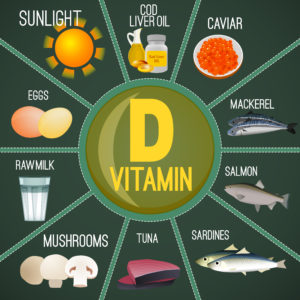
Vitamin D is a hormone that is made when your skin is exposed to the UVB rays in sunlight.
UVB rays are available when the sun is highest, between 10 a.m and 2 p.m. It is estimated that over 1 Billion people are deficient in Vitamin D and yet the guidelines for daily dosage have only gone from 400 IU to 800 IU in past years.
According to the Vitamin D Society, your body can make 10,000 IU in one tanning bed session (approximately 5 to 15 minutes).
Lesson: Do not rely on the government to improve your health.
Calorie Counting with Clean Eating
“Calorie” is the measure of the energy amount in food. Knowing the amount of calories in food helps you to balance the energy that gets to the body with the energy used during day-to-day living.
Calories and energy balance
When you eat or drink, energy gets to the body in the form of calories and the body uses up that energy during your day. Breathing, fidgeting, or rocking in a chair all expend calories, so the 2,000 calorie a day diet is how much food you should eat just to maintain life.
If your lifestyle is active, you may require more calories. If your lifestyle is less active, like a desk job or work-from-home, you may require less calories.
Since the basic requirements do not account for exercise, this is an individual component that you need to consider when choosing what to eat every day.
Note: Clean eating is less about calories and more about food quality.
That being said, you must still balance what you eat with your activity level if you are trying to lose weight.
The old way of thinking is that calories in must balance with calories out. Along with that goes the theory that if you lower calories bye 500 per day, you will lose 1 lb per week.
These are both outdated ways of thinking. Read up on the Set Point theory . Basically, the body wants more food to make up for the calories expended during exercise.
It is more important to eat good quality food and exercise in normal ways (think walking or gardening).
Checking calories in food
Knowing the amount of calories in food is useful when trying to lose weight or even when you need to maintain a healthy weight. The calorie content in food is indicated on the back side of the packaging.
The amount is written in kcals, which is short for kilocalories or kJ, which is short for kilojoules.
The label tells you how many calories are contained in 100 millilitres or 100 grams of the drink or food.
Some labels also state the amount of calories in a single portion of the food but the manufacturer’s idea of a proportion may not be the same as yours.
Shopping For Healthy Food
The old way of thinking about foods is that you need a wide variety of foods every day for optimal health. This is neither realistic or possible for most people.
What is the point in eating fruit in the middle of winter that is devoid of nutrients? It is just a way to sell food year ’round.
It is better to look at what you eat over a period of weeks or months and look for gaps in nutrients.
Parents were getting worried that their toddler would not thrive because he/she was “picky” and would not eat everything, every day.
Now we know that it is natural to be somewhat picky, because it kept us alive.
The experts now tell parents to watch their child’s diet over a week instead of daily, to get a more well-rounded picture of their diet. #nopressure
So try to eat local and fresh fruits and veggies to max out the nutrients you get over the spring, summer, and fall. This helps your body during the winter, when it is harder to get fresh and nutritious produce.
Fresh, local in-season produce is cheaper, tastier, is better quality, and nutritionally superior.
Because seriously, if eating strawberries in December was a requirement of life, strawberries would grow in December wherever you live now.
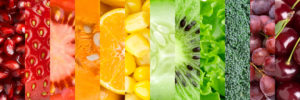
1. Eat A Wide Range Of Vegetables And Fruit when They Are In Season
The recommended daily intake of vegetables and fruits is at least five portions a day. This helps keep farmers and grocery stores busy.
In the real world, shop and prepare the veggies that your family already likes. Then start adding in more variety of local produce.
I know a lot of people do not like vegetables, but you do not get the same nutrients from fruit.
So, if you only do one thing, try to eat more leafy greens.
They are by far the most powerful supplier of nutrients of any vegetable or fruit. For fruit, berries are the best choice. Add some berries to a green salad for better health.

2. Eat Wild-Caught Fish More Often.
Fish come with a range of vitamins, minerals and protein, and two portions of fish should be consumed each week. It is better to not eat fish than to eat farmed fish.
Oily fish should also be included, because this type of fish has omega-3 fats in it. There are multiple benefits to eating Omega-3 (but not for Omega-6, which you need far less of).
Some oily fish are: sardines, trout and salmon. Fish without oil may include: cod, haddock or canned tuna.
3. Eat Better Quality Salt
The old idea that eating salt causes high blood pressure has been debunked.
When you switch over to eating clean foods, you will automatically lower your sodium anyway, and will need to supplement. Switch from that crappy, cheap iodized salt and move over to pink Himalayan salt.
Pink Himalayan salt contains trace minerals that white table salt does not. As well, ordinary table salt comes from poor quality sea beds, with no consideration for quality. This is the salt that is in processed foods, btw.
4. You Can Safely Skip Breakfast

Especially if you are doing Intermittent Fasting with your clean eating. Eat when you are hungry and stop when you are full. Easy peasy.
The idea that breakfast is the “most important meal of the day” is a great way to sell breakfast cereal and toaster waffles, but has no basis in reality.
The only person who should decide when you eat is you.
We all know people who don’t like to eat first thing. I am one of those people. Give me coffee instead; then I can safely eat at around noon.
As long as you eat your daily allotment of calories at some point, it does not matter what time that is. Your body will still use whatever it has to burn for energy, which can also be your stored body fat.
5. Eat Less Sugar. Far Less.
Processed sugar is a poison to your body, but by far the worst of these is high fructose corn syrup, an abomination of sweetness that use a fungus to change glucose into the highly addictive fructose.
Related Post: Break Sugar Addiction with A Detox Plan
It is unnatural to the human body to eat high fructose corn syrup. Coincidentally, high fructose corn syrup (HFCS) is in most processed foods precisely because it is addictive.
Read this list of foods that contain HFCS.
Read this list of 56 names for sugar and watch for them when reading food labels.
The only acceptable clean sugar is what comes from the complex carbs in vegetables and fruit, because it is packaged with nutrients and fiber.
Related Post: 7 Day Sugar Detox Guide
If you must have a sweetener, then try honey or maple syrup. Avoid Agave, as it is high in fructose and spikes blood sugar.
6. Avocados Are Your Friend
Avocado’s are not only a good health fat food, but they are extremely versatile.
The vitamins C, E, and K within avocados are also great for your skin, and possibly prevent wrinkles and sun damage. Vitamin K2 works together with Vitamin D3 to ensure that calcium goes where it is needed and not to your arteries.
Avocados can be mixed with a little lime juice to make guacamole or sliced onto salads. Add some avocado to a smoothie or check out recipes for avocado ice cream or avocado pudding. A great way to hide veggies in your kid’s food…if you need to.
My favorite way to eat avocado is the Ned Bell Prawn recipe from Vancouver chef Ned Bell. Here’s a photo from my first attempt at this recipe:

7. Use Extra Virgin Olive Oil or Avocado Oil For Cooking
Olive oil contains polyphenols, a compound found in many teas, that can prevent certain troublesome cells from causing colon and breast cancer. Olive oil can be used in a variety of recipes, and is a staple in Mediterranean cooking.
Avocado oil is newer but becoming popular because of it’s high smoke point. This means that the oil does not break down at high temperatures.
“Vegetable” oils are unhealthy and should not be heated to high temperatures because it oxidizes, forming unhealthy compounds. And yet vegetable is the only oil used by fast food outlets for deep frying. #fail
8. Eat Your Broccoli!
Broccoli gets a lot of bad press, but these little trees can make a veritable little super-food forest on your plate. And it is considered a “leafy green” veggies, so it is a nutrient powerhouse.
Broccoli is filled with fiber, potassium, calcium, and compounds that reduce the risk of diabetes, cancer, and heart disease.
Two servings or broccoli carry two days of vitamin C, which is great for fighting the common cold.
Don’t overcook your broccoli, as that can destroy many of its nutrients. Consider eating it raw, in an Asian salad recipe or lightly steamed.
9 More Healthy Grocery Shopping Tips
Grocery shopping is something we all have to do, even though choosing the right foods can be very hard indeed. To assist you with your healthy grocery shopping, the tips below can indeed help make things easier than ever before:
- Never go grocery shopping on an empty stomach. Just don’t…you will regret that impulse junk food later!
- Select tuna packed olive oil not soybean oil, for a tiny bit of quality fat. I buy the Rio Mare brand.
Related Post: 24 Healthy Fat Foods
- Look at the labels for the words “hydrogenated”or “partially hydrogenated”. The earlier you see them appear on the list, the higher the amount of unhealthy trans fatty acids the food will contain.
- Don’t be afraid to eat chicken skin if you are buying organic and pastured meat. Fat is important to brain and cellular health.
- Only purchase full fat dairy. Low or no-fat products contain starches and sugars to replace the fat, making them unhealthier.
- Avoid grains until you know if your body tolerates them. They may be causing you inflammation.
- Avoid out-of-season produce, as it is mostly devoid of nutrients.
- Nuts make great snacks, but avoid nuts that use soybean or canola oil, which are trans fats.
- Get some of the low carb treats, such as dark chocolate, jerky, or make fat bombs.
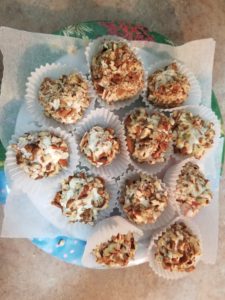
Mini Cheese Ball Fat Bombs
Fat bombs allow you to up the healthy fats in your diet. A classic example of a fat bomb is a cheese ball. Make mini ones for a treat.
There are many different healthy foods at the grocery store, all it takes is the will power to go past the bad foods and on to the good ones.
Conclusion
Clean eating is how humans ate naturally for thousands of years, before mass production of food and mass transportation made us slaves to government guidelines.
My summer vacation, when I was a kid, was visiting relatives on the farm. My cousin and I would raid their huge garden and eat masses of fresh peas and carrots, still with dirt on them.
That is what summer means…sunshine and fresh food.
Spring sunshine triggers our body to want to be outside, looking for new, fresh food after the lean months of winter.
You can buy flats of strawberries in summer, eat your fill, and the freeze the rest for winter. This ensures that you get maximum nutrients at their peak, and you can avoid paying excessively for fruit in winter. win-win!
Holism targets overall wellness, and when we are well, we only get better with age.
Please share this post with anyone who can benefit from it. Sharing is caring!
And follow me on Pinterest!
Until next time, here’s to our health!
-Irma
